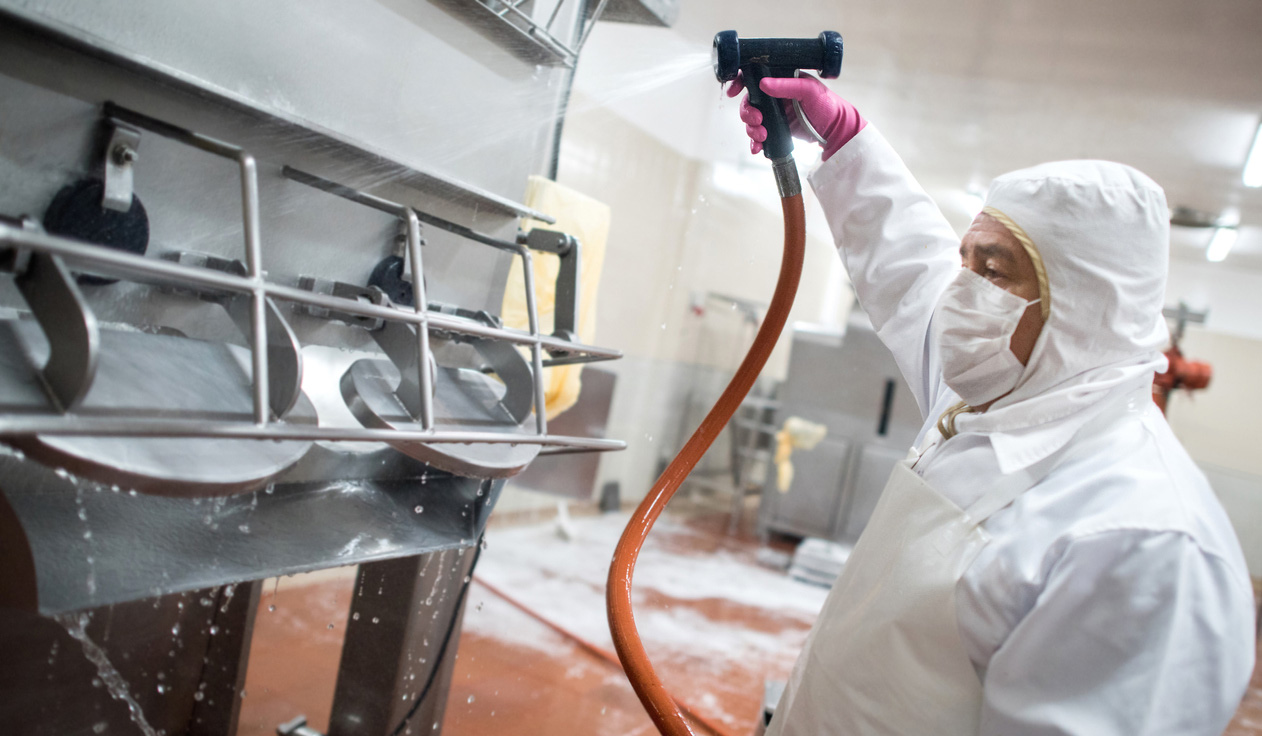A Guide to Food Plant Sanitation for Non-U.S. Exporters
Across the globe, food insecurity is on the rise, putting additional pressure on already stressed food safety systems to protect the limited food available for public consumption. In regions facing scarcity, food safety isn’t just about protecting people from foodborne illnesses and contamination or controlling costs — it’s about ensuring that people have enough food to eat, especially when products are exported to other countries. This is why proper food plant sanitation is more vital than ever.
But with growing economic, climate, and geopolitical challenges, food plant sanitation is also becoming more difficult to maintain. Alongside growing microbiological concerns and changing regulations, the global labor shortage and high turnover rate in the industry makes it easy for protocol breaches to put food at risk.
What Is Food Plant Sanitation?
Food plan sanitation encompasses a rigorous set of standards and practices that ensures processing facilities produce food and beverage products that are safe for human consumption. Food plant sanitation guidelines outline systematic cleaning and sanitization processes for all equipment, surfaces, and environments that come into contact with food to prevent the spread of pathogens, allergens, chemicals, and other hazards. Food plant sanitation guidelines also encompass employee hygiene standards, and proper waste disposal and pest control techniques to maintain a clean and sanitary environment.
The Basics of Food Plant Sanitation
Food plant sanitation is essentially a set of environmental standards, so it’s up to diligent and adherent employees to uphold those standards. Here are three basics that supervisors need to instill in their workforce:
1. The Difference Between Cleaning and Sanitizing
Cleaning and sanitation are two separate processes essential for maintaining facility hygiene standards:
- Cleaning is any sort of process or activity designed to remove residue, debris, dirt, and other forms of soil from workstations, equipment, floors, and other surfaces throughout a food plant.
- Sanitation is any process or activity that reduces the number of microorganisms on a surface, usually with chemical agents or thermal technology that kill bacteria, mold, yeasts, and viruses. Workers must always clean surfaces before sanitizing them.
2. How to Maintain Food Plant Sanitation With TACT WINS
To properly clean and sanitize surfaces, plant workers and supervisors must consider eight key elements, encompassed by the acronym TACT WINS:
- Time: Amount of contact time a cleaning or sanitizing agent needs to dissolve soil or kill pathogens
- Action: Type and amount of physical force a worker needs to apply to effectively remove soils and pathogens
- Concentration: Type and amount of cleaning and sanitizing solution necessary to remove soils or kill pathogens
- Temperature: Temperature range a cleaning or sanitizing agent needs to be at to function effectively
- Water: Amount of water workers need to remove soils, dilute solutions, and wash sanitizers from surfaces
- Individual: Specific employee(s) assigned to each cleaning process who must be properly trained and held accountable for their performance
- Nature of soil: Type of dirt, or “soil,” that needs cleaning (such as grease). Each type of soil requires specific cleaning and sanitizing agents to be successfully removed
- Surface: Type of surface that needs cleaning or sanitizing, which affects the cleaning agent needed. For example, strong industrial cleaners can deteriorate rubber and should not be used on mats
3. How to Prevent Cross-Contamination
In addition to maintaining clean and sanitary surfaces, workers also need to understand how to avoid spreading pathogens to other surfaces and areas of the food plant. The best way to do this is to clearly delineate the different tools, equipment, and zones throughout a facility.
Color coding equipment used for raw meat vs. cooked meat, or chicken vs. beef prevents mixed use and accidental pathogen spread between departments. If workers spot tools being used with the wrong products, they can quickly sanitize affected areas to prevent pathogen transference.
Meeting Global Compliance Standards for Food Plant Sanitation
Proper food plant sanitation is more important than ever for protecting the global food supply. Concerns about scarcity add extra pressure to maintaining sanitation standards at every level of an operation. These best practices lay the foundation for ensuring proper food plant sanitation, but expert support can ensure you meet both local and global standards.
AIB International has helped food and beverage manufacturers navigate global food sanitation and safety standards for over a century. If you want world-class support in preventing contamination, our in-depth training programs can take your food safety program to the next level. The Food Safety and Sanitation Online for Non-U.S. Exporters course offers more than 21 hours of superior training specifically designed to get new hires up to speed and reinforce lessons for seasoned employees.
The course is up-to-date with the most recently integrated pest management protocols, environmental control strategies, and pathogen cleaning techniques.


